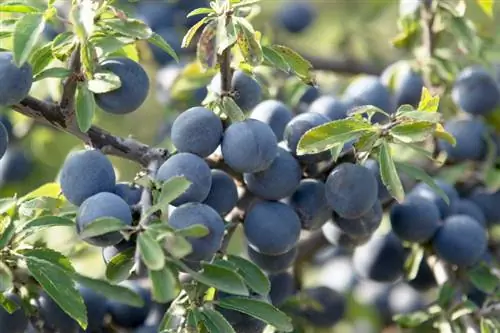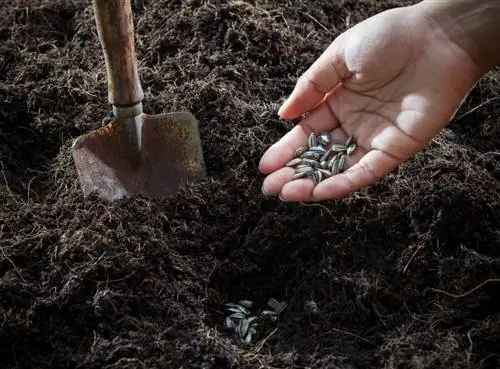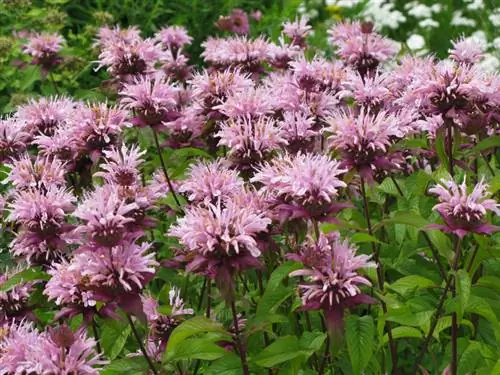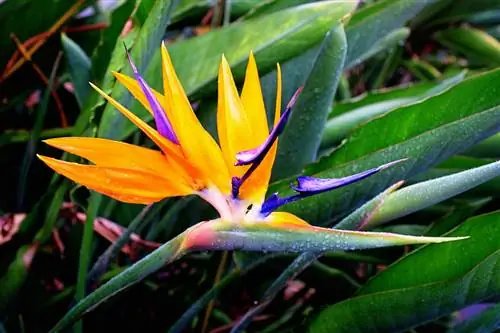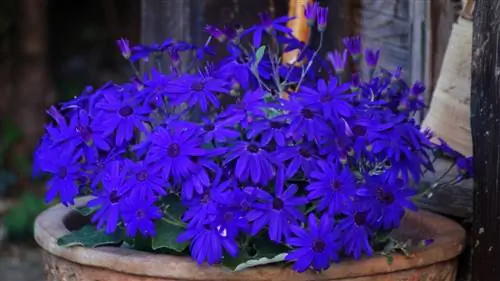- Author admin [email protected].
- Public 2023-12-16 16:46.
- Last modified 2025-01-23 11:21.
The cushion aster (bot. Aster dumosus) is botanically closely related to the smooth-leaf aster (bot. Aster novi belgii). Therefore, their care requirements do not differ significantly from each other. The location should also be chosen similarly for both species.
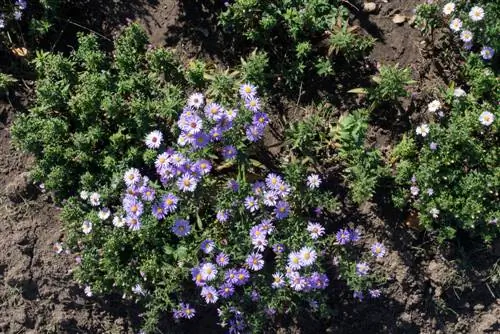
How do I care for a cushion aster?
For successful cushion aster care, plant it in a sunny location with nutrient-rich soil, water regularly, fertilize twice a year, cut the plant back at ground level after flowering and offer young plants protection in winter with leaves, compost or brushwood.
Planting cushion asters correctly
Cushion asters don't grow particularly high (around ten to 50 cm), but they grow wide, as their name suggests. By combining different colored asters, you can make your garden shine tone on tone or even colorfully. You can hope for a particularly rich flowering if you plant your cushion asters in a sunny spot with nutrient-rich soil.
Water and fertilize cushion asters properly
Water your cushion asters regularly so that the soil doesn't dry out, but not so much that waterlogging could occur. Cushion asters don't tolerate either of these things very well, but the damage caused by wetness is usually far greater than any damage caused by dry conditions. If you fertilize these plants twice a year (in spring and after flowering), then that is completely sufficient.
Propagate cushion asters
If you would like to grow your pillow asters yourself, then growing them in a pot is recommended. But sowing outdoors is also possible in a warm and protected place. Plant your cushion asters in early autumn so that they are well rooted by winter and can bloom profusely next year. In addition, cushion asters reproduce themselves through root runners.
Overwintering cushion asters
In principle, a well-grown cushion aster does not need any special winter protection. After flowering, you can cut the asters at ground level in late autumn. Young plants tolerate a layer of leaves, compost or brushwood quite well. Cold wind can affect the cushion asters more than low temperatures, so they should be placed in a place protected from the wind or at least protected from it in winter.
The most important things in brief:
- Sowing: warm and protected
- recommended: growing in a pot
- Planting out: in early autumn
- pouring: vigorously
- fertilize: little
- Flowering period: September to November
- Cutting: promotes new growth, cut off at ground level after flowering
- suitable as a cut flower
Tip
Feel free to plant different colored cushion asters together in the bed, but leave enough space between them. You will soon have a colorful, easy-care garden.


